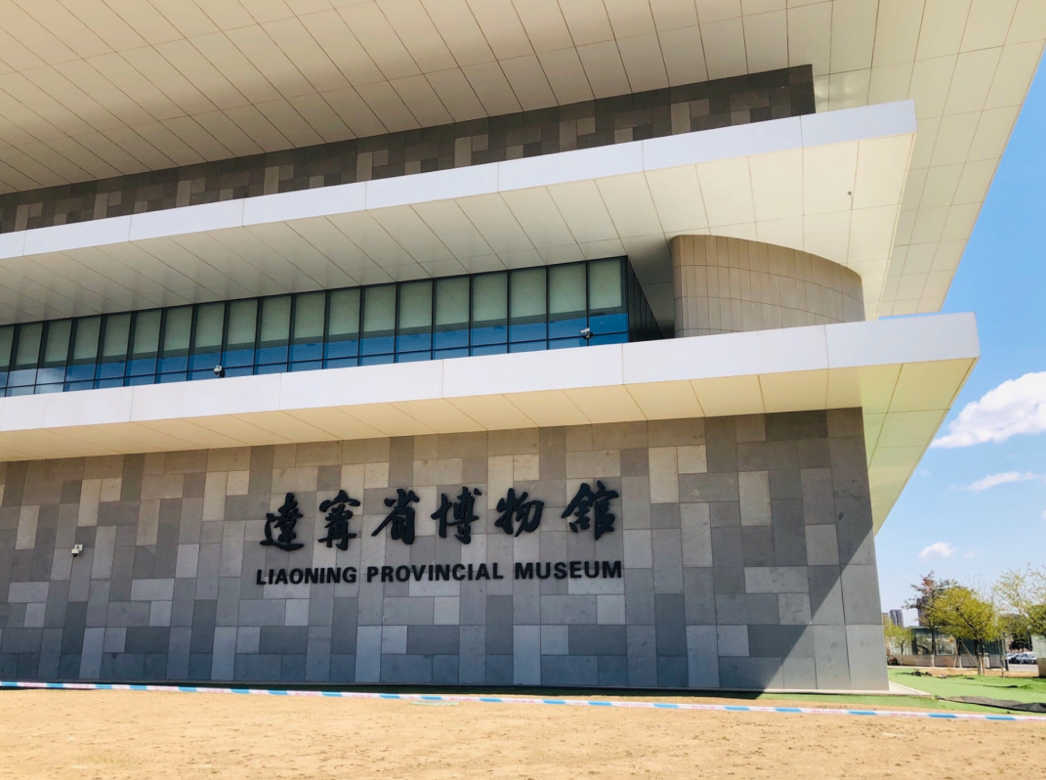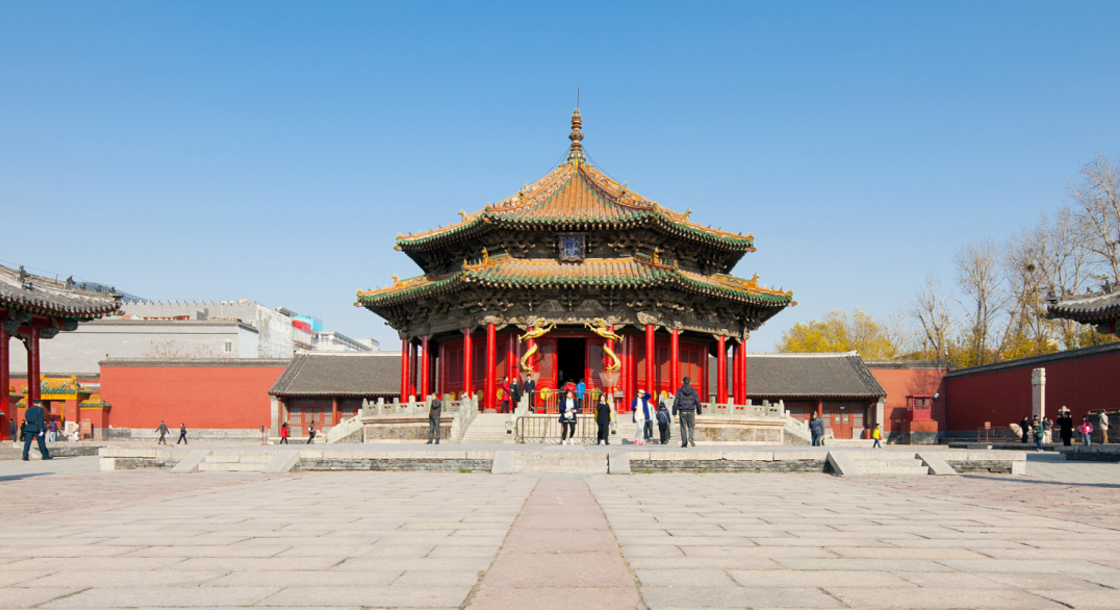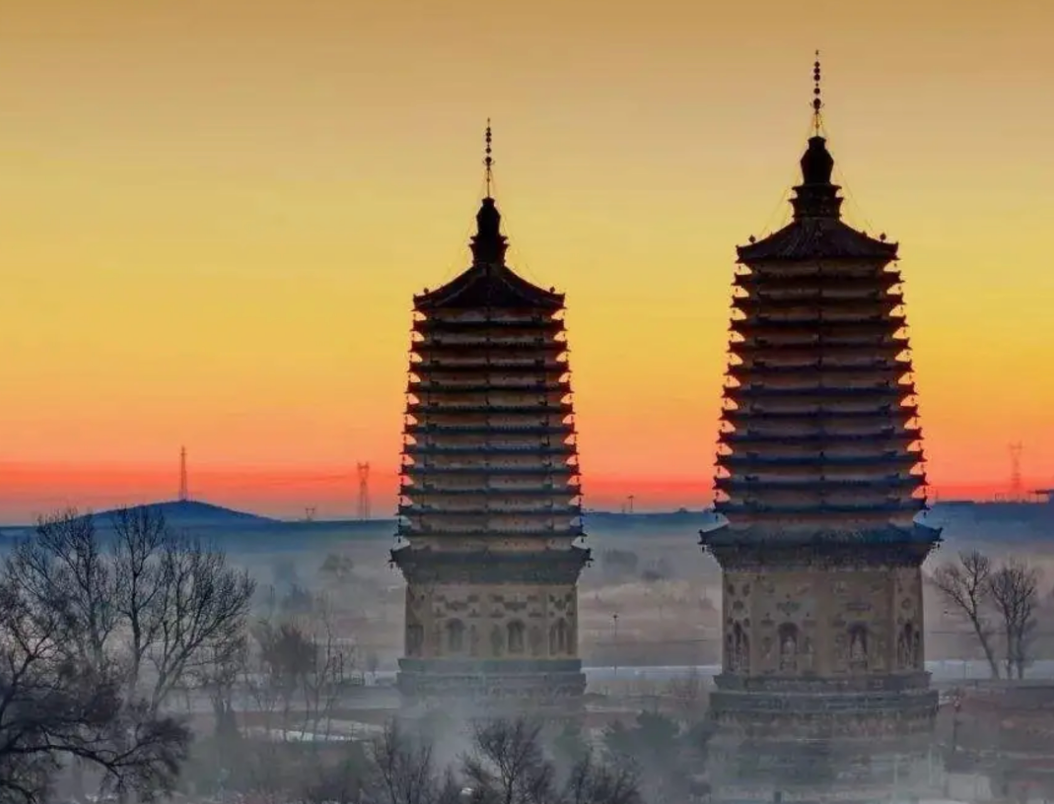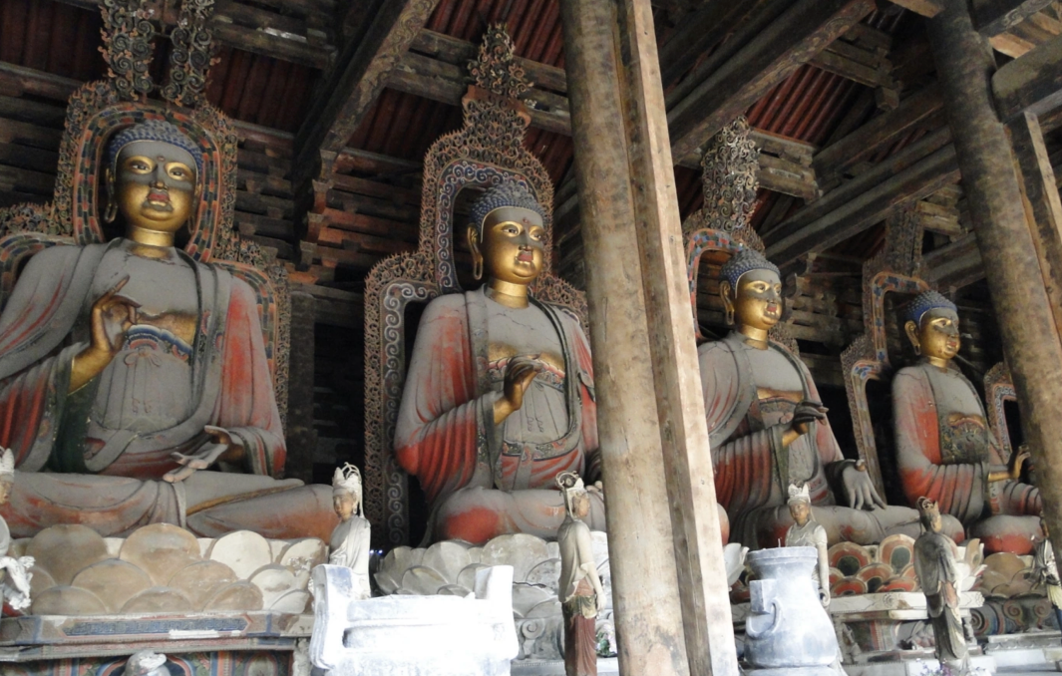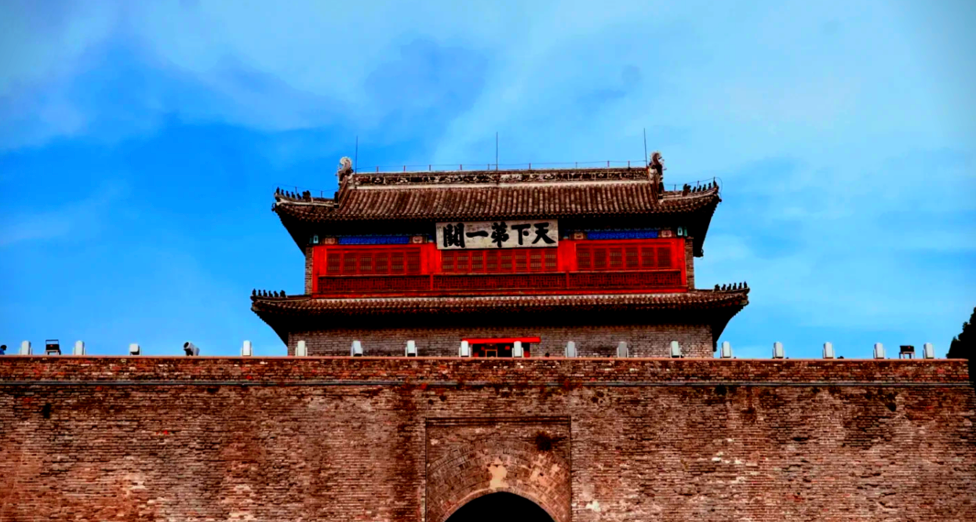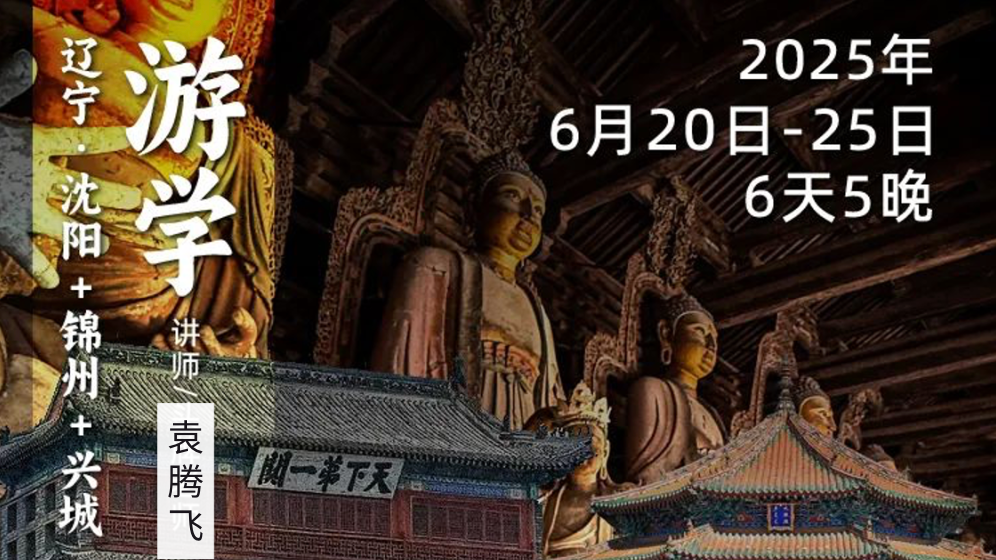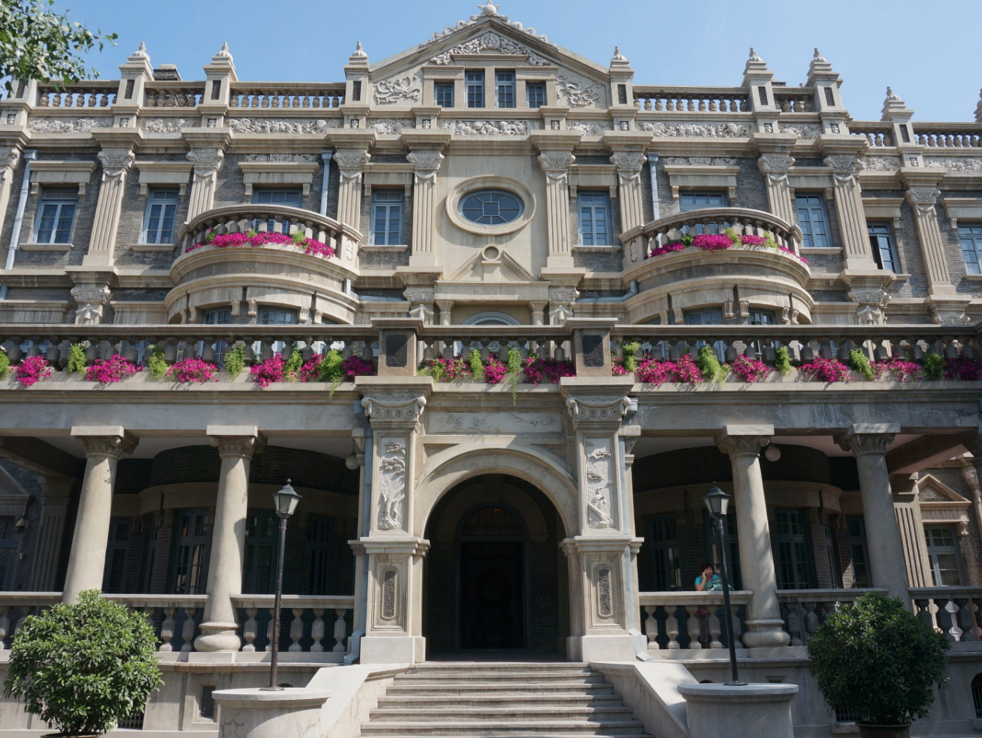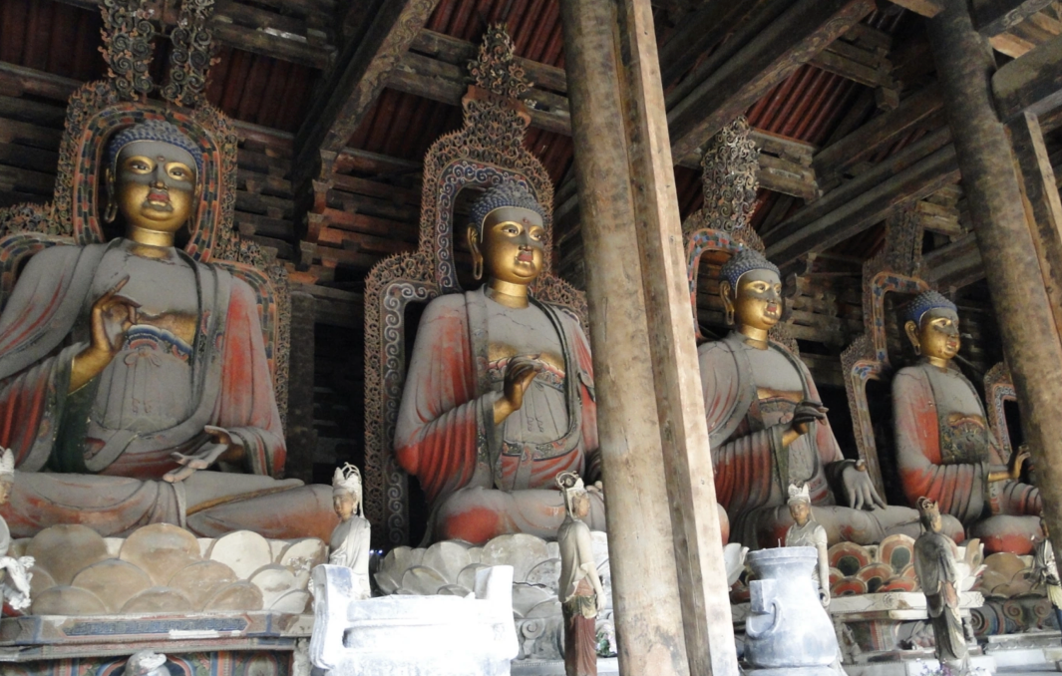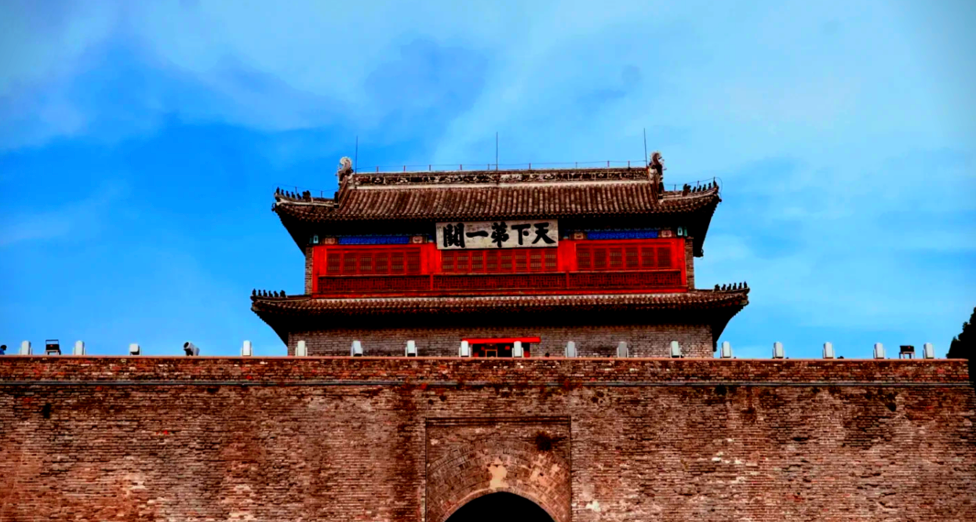LIFEANO 给生活另一种可能
June 20-25, 2025 | Travel along the Liaoxi Corridor: "The best history teacher in history" Yuan Tengfei takes you back to the throat of the empire and the crossroads of civilization
June 20-25, 2025 | Travel along the Liaoxi Corridor: "The best history teacher in history" Yuan Tengfei takes you back to the throat of the empire and the crossroads of civilization
Out of stock
Couldn't load pickup availability
In the history of ancient China
Northeast China and the Central Plains Dynasty
A series of turbulent historical dramas were staged
Influenced the course of Chinese history
Even the integration and changes of the Chinese nation
Among them, the Liaoxi Corridor is undoubtedly an extremely important stage
So, in the summer of 2025
Together with " the best history teacher in history "
Revisiting the Throat of the Empire, the Crossroads of Civilization - Liaoxi Corridor
Team leader
Teacher Yuan Tengfei
Hailed by fans as " the best history teacher in history "
NO.1 —Liaoning Provincial Museum

Liaoning Provincial Museum is the first museum established in New China. It was founded on July 7 , 1949. It was originally named Northeast Museum. In 1959 , it was renamed Liaoning Provincial Museum. In 2008 , it was rated as a national first-class museum. In 2009 , it was listed as a national museum jointly built by the central and local governments. The new Liaoning Museum is located at No. 157 , Zhihui 3rd Street, Hunnan District, Shenyang City, covering an area of 83,200 square meters and a construction area of more than 100,000 square meters. It is divided into five business areas: exhibition, visitor service, cultural relics warehouse, cultural relics protection, and comprehensive business. The exhibition area has three floors, 22 modern exhibition halls, and an exhibition area of 24,000 square meters. It is one of the provincial museums with the largest construction area and exhibition area in China.
Liaoning Museum currently has a collection of nearly 120,000 cultural relics, including tens of thousands of precious cultural relics, mainly archaeological excavations and historical and artistic cultural relics in Liaoning Province, divided into 20 categories such as calligraphy, painting, silk embroidery, bronze, and ceramics. The most distinctive and influential ones are the calligraphy and paintings from the Jin, Tang, Song and Yuan Dynasties, kesi embroidery from the Song, Yuan, Ming and Qing Dynasties, jades from the Hongshan Culture, bronzes buried in the Shang and Zhou Dynasties, porcelains from the Liao Dynasty, steles and inscriptions from various dynasties, prints from the Ming and Qing Dynasties, ancient maps, and currencies from various dynasties. Among them, the collection of calligraphy and paintings from past dynasties occupies an important position both at home and abroad, and is famous both at home and abroad for its complete system, excellent quality and collection of fine works. For example, the museum’s collection includes the world’s earliest extant regular script ink work "Elegy for Cao E by an Anonymous Author in the Eastern Jin Dynasty", "Wansui Tongtian Tie" copied in the Tang Dynasty, "Four Ancient Poems" by "Cursive Saint" Zhang Xu, "Thousand Character Classic" the only copy of cursive script handed down from Emperor Huizong of Song Dynasty, "Ladies with Flowers in Their Hairpin" by Zhou Fang of the Tang Dynasty, "Lady of Guoguo's Spring Outing" copied in the Song Dynasty by Zhang Xuan of the Tang Dynasty, "Waiting for the Ferry at the Mountain Pass in Summer" the representative work handed down from generation to generation by Dong Yuan, the founder of Chinese southern school of landscape painting in the Five Dynasties period, and "Auspicious Cranes" by Emperor Huizong of Song Dynasty, etc., all of which are rare treasures.
No.2— Qing Fuling Mausoleum Qing Zhaoling Mausoleum
 The Zhaoling Mausoleum of the Qing Dynasty, commonly known as the Northern Mausoleum, is located at No. 12 , Taishan Road, Huanggu District, Shenyang City, Liaoning Province. It is the joint burial mausoleum of Emperor Taizong of the Qing Dynasty, Huang Taiji, and Empress Xiaoduanwen, Borjigit. Construction began in the eighth year of Chongde in the Qing Dynasty ( 1643 ) and was initially completed in the eighth year of Shunzhi in the Qing Dynasty ( 1651 ). After the expansion and reconstruction by Emperors Kangxi and Qianlong, it eventually formed a unique ancient building complex. It is the largest and most well-preserved imperial mausoleum among the three mausoleums in Shengjing.
The Zhaoling Mausoleum of the Qing Dynasty, commonly known as the Northern Mausoleum, is located at No. 12 , Taishan Road, Huanggu District, Shenyang City, Liaoning Province. It is the joint burial mausoleum of Emperor Taizong of the Qing Dynasty, Huang Taiji, and Empress Xiaoduanwen, Borjigit. Construction began in the eighth year of Chongde in the Qing Dynasty ( 1643 ) and was initially completed in the eighth year of Shunzhi in the Qing Dynasty ( 1651 ). After the expansion and reconstruction by Emperors Kangxi and Qianlong, it eventually formed a unique ancient building complex. It is the largest and most well-preserved imperial mausoleum among the three mausoleums in Shengjing.
The Qing Fuling Mausoleum is located in Tianzhu Mountain on the north bank of Hunhe River in the eastern suburbs of Shenyang City, Liaoning Province, about 18 kilometers away from the city. It is the mausoleum of Nurhaci, the founder of the Qing Dynasty, and Empress Xiaocigao, Yehenala. Because it is located in the eastern suburbs of Shenyang, it is also called Shenyang East Mausoleum. It is one of the three mausoleums of Shengjing. In the third year of Tiancong ( 1629 ), the mausoleum was built in the northeastern suburbs of Shengjing.
NO.3— Shenyang Imperial Palace
 The Shenyang Imperial Palace, also known as the Shengjing Palace, is located in Shenhe District, Shenyang City, Liaoning Province. It was the imperial palace of the early Qing Dynasty. The Shenyang Imperial Palace was built in the tenth year of the Tianming reign of Emperor Taizu of the Qing Dynasty ( 1625 ) and completed in the first year of the Chongde reign of the Qing Dynasty ( 1636 ). It is not only one of the only two remaining royal palace complexes in China, but also the only royal complex outside the Great Wall of China. After the Qing Dynasty moved its capital to Beijing, the Forbidden City was called the "Palace of the Secondary Capital" and the "Palace of the Remaining Capital". Later it was called the Shenyang Imperial Palace. It was built during the three periods of Nurhaci, Huang Taiji and Qianlong, over a period of 158 years. [5] It has more than 100 buildings and 500 rooms. After entering the Shanhai Pass, Kangxi, Qianlong, Jiaqing and Daoguang successively used it as their residence during their ten "Eastern Tours".
The Shenyang Imperial Palace, also known as the Shengjing Palace, is located in Shenhe District, Shenyang City, Liaoning Province. It was the imperial palace of the early Qing Dynasty. The Shenyang Imperial Palace was built in the tenth year of the Tianming reign of Emperor Taizu of the Qing Dynasty ( 1625 ) and completed in the first year of the Chongde reign of the Qing Dynasty ( 1636 ). It is not only one of the only two remaining royal palace complexes in China, but also the only royal complex outside the Great Wall of China. After the Qing Dynasty moved its capital to Beijing, the Forbidden City was called the "Palace of the Secondary Capital" and the "Palace of the Remaining Capital". Later it was called the Shenyang Imperial Palace. It was built during the three periods of Nurhaci, Huang Taiji and Qianlong, over a period of 158 years. [5] It has more than 100 buildings and 500 rooms. After entering the Shanhai Pass, Kangxi, Qianlong, Jiaqing and Daoguang successively used it as their residence during their ten "Eastern Tours".
NO.4— Marshal's Mansion

Marshal Zhang's Mansion, also known as the "Grand Marshal's Mansion" or the "Young Marshal's Mansion", is located at No. 46 , Young Marshal's Mansion Lane, Chaoyang Street, Shenhe District, Shenyang City, Liaoning Province. It was the official residence and private residence of Beiyang warlord Zhang Zuolin and patriotic general Zhang Xueliang. It covers a total area of 36,000 square meters, with a total construction area of 27,600 square meters, an exhibition area of 8,000 square meters and an exhibition line of 2,000 meters. It is the best-preserved celebrity residence in Northeast China so far, and has developed into a comprehensive museum integrating the modern and contemporary history of Northeast China and celebrity commemorations.
The Zhang Family Mansion was first built in the third year of the Republic of China ( 1914 ). In 1988 , the Zhang Family Mansion was named Zhang Xueliang's Former Residence Exhibition Hall. In 2002 , the "Zhang Xueliang's Former Residence Exhibition Hall" was renamed the "Zhang Family Mansion Museum".
NO.5 —Chongxing Temple

Chongxing Temple Twin Towers, also known as Beizhen Twin Towers, are the top four twin towers in China. There is no documented record of the founding time of Chongxing Temple Twin Towers. Judging from the structure and style of the towers, they should be relics from the middle and late Liao Dynasty. Because there is Chongxing Temple to the north of the towers, they are named after it. The twin towers stand side by side outside the gate of Chongxing Temple. Both are octagonal, 13- story solid brick towers with dense eaves. The twin towers face each other from east to west, 43 meters apart. The east tower is 43 meters high and the west tower is 42 meters high. Both are octagonal, 13-story solid brick towers with dense eaves. The base is 7 meters wide on each side, with various patterns carved on the base, and lions, weight-bearing warriors and lotus petals carved on the lower part. There is an upturned lotus seat upward, which supports the tower body. There are arch niches on each side of the tower body, with sitting Buddha carved inside and guards standing outside. The top is decorated with canopies, flying celestial beings and bronze mirrors. The tower has twelve layers of eaves, which are gradually retracted from bottom to top. Wind chimes are hung on the corners of each eave, swaying with the wind, with crisp and pleasant sounds. The lotus seat, treasure bottle, gilded brake pole, treasure beads and phase wheel on the top of the tower are all well preserved. In the middle of the west tower, there is also a small stone tablet with the "Record of Rebuilding the Chongxing Temple Tower" in the 28th year of Wanli in the Ming Dynasty ( 1600 ). It is an important example of a dense-eaves brick tower from the Liao Dynasty in China.
NO.6— Fengguo Temple

Fengguo Temple, commonly known as the Big Buddha Temple, was built in the ninth year of Kaitai in the Liao Dynasty ( 1020 AD) and is one of the three largest temples of the Liao Dynasty in China. The existing buildings include the rebuilt outer gate, the inner gate rebuilt in the Qing Dynasty, the archway, the bell pavilion, the stele pavilion, the Heavenly King Hall, and the Great Hall of the Liao Dynasty. The Great Hall, the seven Buddha statues, and the architectural paintings of Fengguo Temple are collectively known as the "Three Wonders of Fengguo Temple". It is a royal temple that integrates cultural values such as archaeology, painting, and sculpture. The construction method represents the highest level of Chinese architecture in the 11th century and provided a mature construction method for the later construction of the Forbidden City in Beijing.
NO.7— Shanhai Pass

Shanhaiguan, also known as Yuguan, Yuguan and Linluguan, is one of the northeastern passes of the Ming Great Wall. Before 1990 , it was considered to be the eastern starting point of the Ming Great Wall. It is known as "one of the three great wonders of the Great Wall of China" (Shanhaiguan in the east, Zhenbeitai in the middle, and Jiayuguan in the west), "the first pass in the world", "the throat of the border counties and the guarantee of the capital". It echoes Jiayuguan thousands of miles away and is famous all over the world.
In the 14th year of the Hongwu reign of the Ming Dynasty ( 1381 ), a city was built, a pass was built and a guard was set up. Because it is close to the mountains and the sea, it is named Shanhaiguan. The circumference of Shanhaiguan City is about 4 kilometers. It is connected to the Great Wall. The city is 14 meters high and 7 meters thick. There are four main gates and various defensive buildings. Including the "No. 1 Pass in the World" Arrow Tower, Jingbian Tower, Muying Tower, Linlu Tower, Wengcheng and the 1,350- meter-long Ming Dynasty Plain Great Wall.
Registration Instructions
Assembly / disbandment
● The group will gather in Shenyang on June 20 , 2025 (Friday) and disband in Qinhuangdao on June 25 (Wednesday). Please arrange your itinerary before and after the gathering properly.
Precautions
● Customer service will contact you one week in advance after registration, please keep your WeChat and phone open;
● Children under 6 years old are not recommended to participate. Minors aged 6-14 and seniors over 70 years old must be accompanied by family members to register together;
Activity Fees
● The fee includes: meals, accommodation, transportation and lecturer explanations from the time of gathering to the time of disbanding; it does not include: round trips before the gathering and after the disbanding, and other expenses not listed;
Hassle-free refund policy
● If the event is cancelled due to reasons of the organizer, all fees will be refunded;
● If the event is cancelled due to force majeure, the unincurred fees will be refunded;
● If you are unable to attend the event due to personal reasons, no fees will be refunded (the spot is transferable). Please do not take pictures if you mind. Thank you for your understanding.
Share

